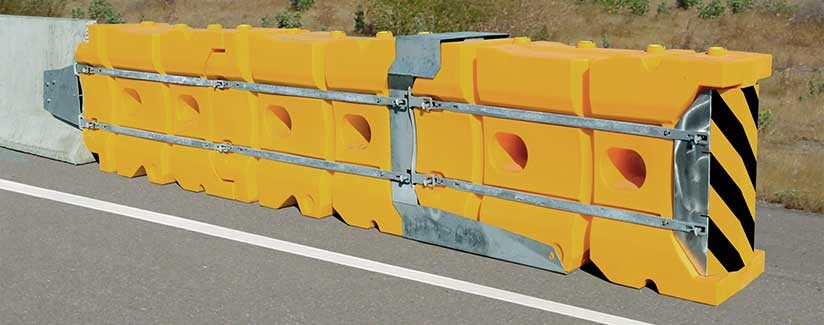
Road safety is one of the most important concerns for drivers, passengers, and pedestrians. Every year, countless accidents happen due to sudden stops, driver errors, or unexpected obstacles. One effective way to reduce the severity of accidents and protect lives is the use of crash cushions. These devices are designed to absorb impact and prevent serious collisions on busy roads and highways.
What Is a Crash Cushion?
A crash cushion, sometimes called an impact attenuator, is a safety device placed in locations where vehicles are at high risk of collision, such as the ends of barriers, highway exits, or construction zones. The primary function of a crash cushion is to absorb the energy from a vehicle impact. This reduces the damage to both the vehicle and its occupants, minimizing the chances of serious injury or death.
Crash cushions are built using materials like steel, plastic, or specially designed energy-absorbing components. Some are stationary, while others are designed to move or deform during a collision. This controlled deformation slows the vehicle gradually, preventing abrupt stops that could be deadly.
How Crash Cushions Work
The effectiveness of a crash cushion lies in its ability to manage kinetic energy. When a vehicle strikes a crash cushion, the device crumples or compresses in a controlled manner. This process converts the vehicle’s kinetic energy into harmless motion within the crash cushion, slowing down the vehicle safely.
By managing the impact force, crash cushions reduce the risk of vehicles rebounding back into traffic or flipping over. They also prevent the vehicle from directly hitting fixed objects like guardrails, poles, or concrete barriers, which could cause severe damage. In short, crash cushions act as a buffer, taking the brunt of the impact to save lives.
Key Locations for Crash Cushions
Crash cushions are typically installed in high-risk areas. One common location is at the end of highway barriers. Without a crash cushion, a vehicle hitting the end of a barrier could stop suddenly, causing serious injury or a chain reaction of accidents.
Another important location is near construction zones. Road work often requires temporary lane changes, narrowing of lanes, or abrupt stops. Placing crash cushions in these areas protects both drivers and construction workers by absorbing impacts that might occur from collisions with construction barriers.
Crash cushions are also used at toll plazas, roundabouts, and intersections where vehicles are likely to approach obstacles at high speed. In these areas, the presence of crash cushions has been proven to significantly reduce the severity of collisions.
Benefits of Using Crash Cushions
The main benefit of a crash cushion is improved safety for drivers and passengers. By absorbing impact forces, crash cushions prevent serious injuries and, in many cases, save lives. They also reduce vehicle damage, which can lower repair costs and insurance claims.
Additionally, crash cushions contribute to smoother traffic flow. When a crash occurs, a vehicle that hits a crash cushion is less likely to block lanes or cause secondary accidents. This helps prevent traffic congestion and allows emergency services to respond more quickly.
From an economic perspective, crash cushions are cost-effective safety solutions. The initial investment in installing these devices is often outweighed by the reduction in accident severity, medical costs, and property damage over time.
Conclusion
Crash cushions play a vital role in road safety by preventing serious collisions and protecting lives. These devices are carefully designed to absorb impact forces, slow down vehicles safely, and reduce damage to both drivers and vehicles. By placing crash cushions in high-risk areas such as highway ends, construction zones, and intersections, authorities can significantly enhance safety for everyone on the road.
Investing in crash cushions is an investment in human life, road safety, and the overall efficiency of traffic management. Their presence reminds drivers to stay alert while providing a reliable safeguard against potentially deadly accidents.







